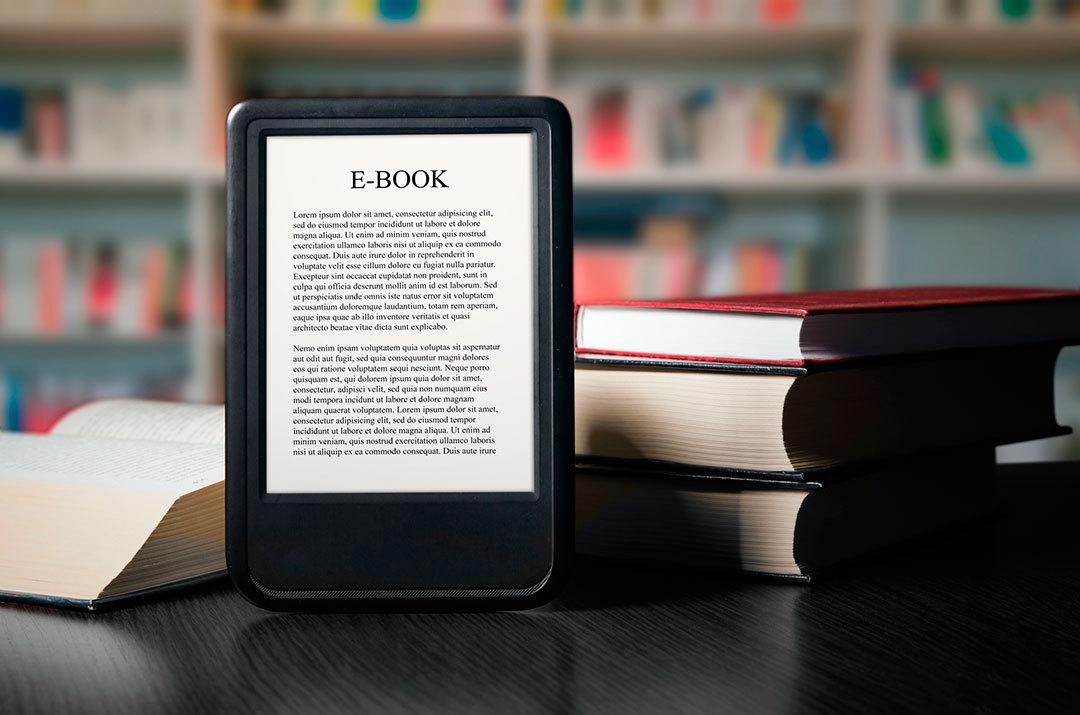Table of Contents
ToggleIntroduction
E Books vs Paperbacks Pros And Cons In 2024 Paperbacks and e-books have been at odds in the book industry for years, with each medium offering unique benefits and drawbacks. E-books have become a contemporary competitor for readers’ attention as a result of the development of digital technology.
Nevertheless, many people still adore paperbacks because of their tactile appeal, nostalgic appeal, and dependability, even in the digital age.
The Rise of E-Books: A Digital Revolution in Reading
The Convenience Factor
E-books, which have become a dominant force in the world of literature, offer unparalleled convenience. One of their greatest advantages is portability. Instead of carrying around a heavy bag of books, readers can load hundreds, even thousands, of e-books onto a single device, such as an e-reader, tablet, or smartphone.
This makes them an ideal choice for people who travel frequently, have limited storage space, or simply want to carry a wide selection of books without added weight.
In addition, e-books can be downloaded instantly from online bookstores, allowing readers to purchase and start reading a new book within minutes. This immediate gratification is one of the key reasons many readers are gravitating toward e-books.
Read More
Accessibility and Customization
E-books offer various accessibility options that can be a game-changer for readers with specific needs. Many e-readers come equipped with features such as adjustable font sizes, background colors, and text-to-speech capabilities, allowing users to personalize their reading experience to their preferences. These features can greatly benefit those with visual impairments or learning disabilities, such as dyslexia, who may struggle with the fixed layout of printed books.
Moreover, e-books often come with built-in dictionaries and search functions, enabling readers to look up unfamiliar words or phrases and instantly navigate to specific parts of the text without having to flip through pages. This can significantly enhance the reading experience, especially for those studying complex or academic material.

Affordability and Space-Saving
E-books are typically less expensive than their paperback counterparts. The cost of production for e-books is much lower than that of print books, as there are no printing, shipping, or warehousing costs involved. As a result, readers can often find e-books at a fraction of the price of a paperback, making them a more affordable option in the long term.
Additionally, e-books take up no physical space. While a paperback collection can quickly overtake shelf space and fill up rooms, an e-book library can exist in the palm of your hand. For people with limited storage or those who simply prefer a more minimalist lifestyle, this is a huge advantage.
Environmental Impact
One of the often-cited benefits of e-books is their reduced environmental impact. E-books do not require paper, ink, or shipping, which means they generate less waste and contribute fewer carbon emissions than printed books. For eco-conscious readers, this may make e-books an appealing option, especially as the world faces increasing concerns about deforestation and climate change.
However, it’s important to note that e-readers themselves have an environmental footprint. Manufacturing electronic devices requires the extraction of minerals, energy consumption, and the production of electronic waste. While e-books are environmentally friendlier than paperbacks in some respects, the sustainability of e-readers is still a topic of ongoing debate.
The Enduring Appeal of Paperbacks: A Classic Reading Experience
The Tactile Joy of Paper
For many readers, nothing compares to the sensory experience of holding a physical book. The weight, texture, and smell of a paperback contribute to the ritual of reading, providing an immersive experience that e-books cannot replicate. The act of flipping through pages, feeling the paper between your fingers, and marking your progress with a bookmark or dog-eared pages creates a tactile connection to the story.
Studies have also shown that reading physical books can improve focus and retention. Without the distractions of notifications or screen fatigue, readers can fully immerse themselves in the narrative. Many people find that they read more deeply and engage more with the material when they are holding a physical book.
Read More
No Need for Technology or Batteries
Another key advantage of paperbacks is that they don’t require technology. You don’t need an internet connection, battery power, or a device to read a paperback. Whether you’re lounging at the beach, relaxing in a park, or reading before bed, a paperback book is always ready to go. This makes them particularly reliable in situations where access to technology may be limited.
Moreover, paperbacks don’t require charging or updating software. As long as you have the book in hand, you can read it anytime, anywhere—without worrying about battery life or connectivity issues.
Collectible and Shareable
Physical books also have a unique appeal for collectors. First editions, signed copies, and beautifully designed covers make paperbacks more than just reading material—they become treasured items. For many readers, the act of building a personal library, displaying books on a shelf, and sharing them with friends or family is an integral part of their reading experience.
Unlike e-books, which are tied to a particular device or account, paperbacks can be freely shared, gifted, or donated. You can pass your favorite book along to a friend, sell it at a yard sale, or donate it to a library. This flexibility adds to the sense of community that paperbacks foster, as well as the joy of passing on a beloved story.
The Environmental Perspective
While e-books have an edge in terms of paper usage and carbon emissions from printing and shipping, paperbacks still have some environmental advantages. When produced sustainably, paperback books can be made from recycled paper, and many publishers are increasingly focused on reducing their environmental impact through eco-friendly printing practices.
Additionally, once a paperback is read, it can continue its life through second-hand markets or charitable donations, extending its useful life. In this sense, the environmental impact of paperbacks can be mitigated through reuse, reducing the need for constant production of new books.

E-Books vs. Paperbacks: A Comparison at a Glance
| Factor | E-Books | Paperbacks |
|---|---|---|
| Portability | Can store thousands of books on one device | Each book requires physical space |
| Convenience | Instant download, adjustable features | No technology needed, no screen fatigue |
| Price | Often less expensive than paperbacks | Typically more expensive, especially new releases |
| Environmental Impact | Less paper waste, but e-readers have a carbon footprint | Paper usage and shipping impact, but recyclable |
| Reading Experience | Customizable text size, built-in dictionary | Tactile experience, no technology needed |
| Longevity | Depend on the device, may become obsolete | Can last for years, collectible and shareable |
| Accessibility | Features for the visually impaired, text-to-speech | No special features, but can be easily highlighted |
| Storage | Digital storage, no physical space required | Requires bookshelf space, but can be donated or sold |
Conclusion
Ultimately, whether e-books or paperbacks are better depends on your personal preferences and lifestyle. E-books offer unparalleled convenience, affordability, and customization, making them an excellent choice for digital natives and those with busy, mobile lives. On the other hand, paperbacks provide a tactile, immersive experience that many readers cherish, along with the added joy of collecting and sharing physical books.
In 2024, both formats continue to coexist, each offering something unique to readers. Whether you prefer the convenience of an e-book or the nostalgic appeal of a paperback, the choice is yours to make based on what best suits your needs, values, and reading habits.
Read More
FAQ
1. Are e-books cheaper than paperbacks?
Generally, yes. E-books are often less expensive than paperbacks due to the lack of printing, shipping, and physical production costs. However, the price difference can vary based on the publisher, the popularity of the book, and the platform.
2. Which is better for the environment: e-books or paperbacks?
E-books are considered more environmentally friendly in terms of paper usage and shipping, but they still come with an environmental impact due to the manufacturing of e-readers and their eventual disposal. Paperbacks, when made sustainably, can have a lower carbon footprint, especially if they are recycled or reused.
3. Can I share e-books with friends like paperbacks?
No, e-books are typically tied to the device or account from which they were purchased. Some platforms allow you to lend e-books, but the process is more restricted compared to the free sharing and gifting of paperback books.
4. Are paperbacks better for focus and retention?
Many readers find that physical books help them focus better because they don’t have the distractions of digital notifications or screen fatigue. Additionally, research suggests that readers may retain information more effectively when reading from paper compared to digital screens.
5. What’s the lifespan of an e-book or paperback?
E-books can last as long as your device is functional, but as technology advances, devices can become outdated. Paperbacks can last for many years, especially if they are stored properly, and can be passed down or resold once you’ve finished reading them.
















